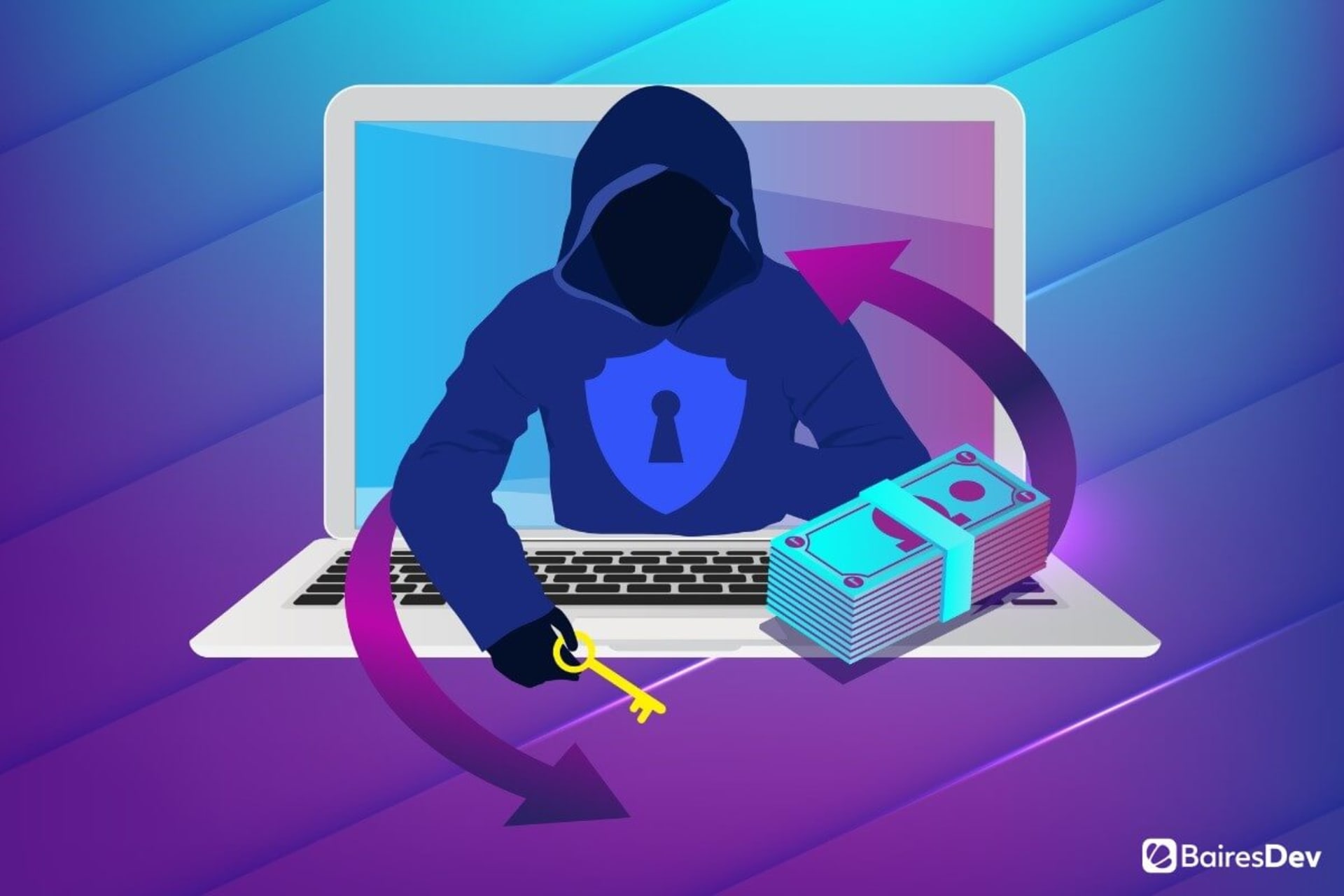The extent of the damage inflicted by ransomware could cost up to $265 billion by 2031, according to predictions from Cybersecurity Ventures. In 2021 alone, the agency sees it costing $20 billion worldwide.
That comes to show that ransomware attacks are becoming more intricate and sophisticated, and the impact of the damage is becoming more serious. They represent one of the most critical cybersecurity threats that exist today, given their ubiquity and the ease with which cybercriminals can carry out these attacks.
Both businesses and individuals are at risk when it comes to ransomware. But there are steps you can take for protection. The first one? Knowing what you’re up against.
What Is Ransomware?
Essentially, ransomware is a form of malware that enables the cybercriminal to hold someone’s information at ransom. In exchange for access to the victim’s data and files, they ask for a payment, often in the form of cryptocurrency.
By encrypting the victim’s files, programs, or databases, the perpetrator renders them useless to the owner, making them unreadable or indecipherable. Once the victim pays the ransom, the cybercriminal claims they will restore access. The perpetrator will typically specify a window during which the victim may pay the ransom or lose their data forever.
The 2 main types of ransomware are locker ransomware and crypto-ransomware. Locker ransomware prevents the victim from performing basic computer functions, while crypto ransomware targets specific files and data.
There are several ways ransomware can infiltrate devices. For example, users might click links or download attachments in a phishing email, not knowing they are malicious.
How to Protect Your Business Against Ransomware Attacks
1. Install Cybersecurity Software
The best defense is a good offense. In order to protect your business against any type of malware attack, make sure you have installed strong antivirus software, which will both detect the presence of malware and combat them.
There are both custom and prepackaged cybersecurity programs. Work with your in-house IT team or an external one to determine which solution is the best for your company and the particular issues you face.
2. Scan for Vulnerabilities
Your IT should also routinely conduct audits of your current software, scanning for existing vulnerabilities. You should do this regularly since software is frequently updated as cybercriminals find new ways of infiltrating businesses’ systems and launching their attacks, meaning new threats arise frequently.
By scanning your systems for vulnerabilities, you can become aware of areas that are ripe for attack, hopefully before the perpetrators do.
3. Patch Vulnerabilities
Once you identify these vulnerabilities, the next step is to patch them so that they don’t become issues for you and your team. By patching them, you’re keeping hackers out so they can’t exploit your systems via ransomware and other means. These patches usually come from the developer and vendor affiliated with the software in question.
By regularly scanning for vulnerabilities, you’ll end up with fewer issues that actually need patching. It’s also important to update your software whenever a new version is available because new releases often come with protections against malware threats that have emerged.
4. Always Backup Your Data
It may seem like a small fix, but it can be a life-saving measure if you fall prey to ransomware: back up your data. Make sure all your employees are backing up important files and programs in another location. That way, you’ll have a copy of your critical files you can rely on in case you get locked out of the originals if a hacker does strike.
It’s best to set up automatic backups for all devices your business and employees use. They should be backing up both to a cloud location and an offline location, so you have multiple courses of action. Make sure your backups are as secure as your original files.
5. Limit Access
The fewer people who have access to files, programs, and systems, the lower the likelihood of malware infecting them. To keep this possibility at bay, limit administrative and even editor privileges for software so that only the employees who truly need to use them are able to access them.
6. Educate Your Staff
Ransomware can infiltrate a system through a careless click or a random download. Some employees may not know the basics of internet safety, so you could very well prevent damage before it takes place by educating them on secure digital practices.
Take this training beyond an in-person environment. Teach your staff about safe internet practices when they’re using devices or accessing work networks remotely, too. For example, remind them about the dangers of using public wifi.
What to Do if You’ve Already Been Infected
If a device has already been infected with ransomware, don’t pay the ransom. This advice comes from most cybersecurity experts, technology vendors, and even the FBI. One major reason not to is because there’s no guarantee the hacker will actually restore access — these aren’t exactly trustworthy individuals — and you could pay an exorbitant fee and still be without these critical programs and files.
Instead, take the following steps, not necessarily in this order:
- Engage an internal or outsourced cybersecurity expert to advise you.
- Determine what kind of threat you’re facing.
- Isolate the device in order to prevent the infection from spreading, disconnecting it from other devices.
- Examine backups in order to see what you can restore.
- Determine whether there are decryption tools available to help you access and read your files.
- File a police report.
- If worst comes to worst, restore your device to factory settings.
Remember: having a robust cybersecurity infrastructure in place is the best way to prevent these attacks from occurring in the first place. This reduces the likelihood of ransomware and other cyberattacks from wreaking havoc on your systems. Make sure to take the key steps for protecting yourself, too, so if the worst happens, it won’t be a disaster.







